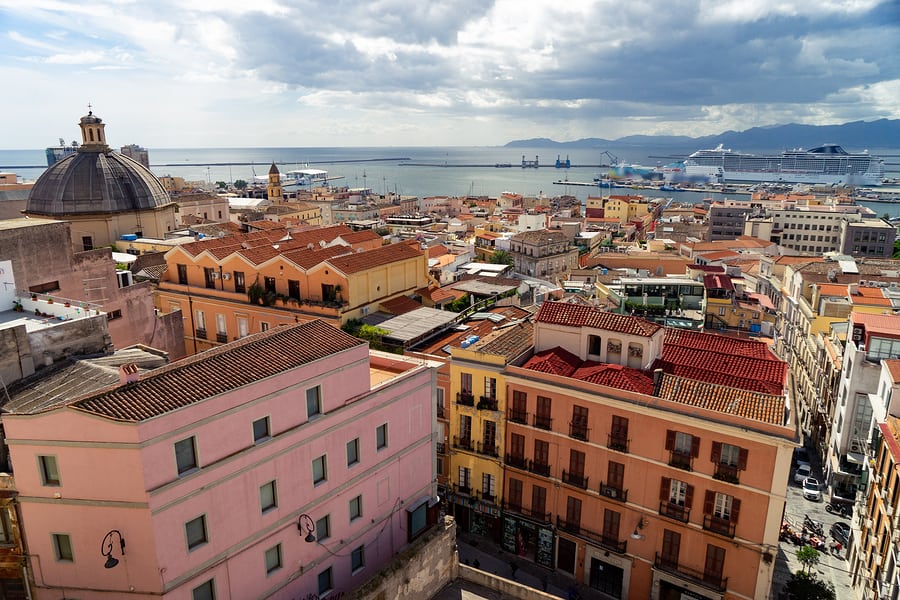A Danish Twins study on longevity recently completed revealed that genetics only plays a ten percent role in the length and quality of your life–the other 90 percent has to do with diet and lifestyle choices. With findings like this, it is evident that if you find the right diet for your body, you can significantly improve both your health and your longevity.

We are constantly bombarded with the latest crazes, fads, and diets that promise to banish bloat and melt belly fat forever, yet many of us are still overweight, tired, and sick; with all of the supposed knowledge and expertise that we have at our fingertips, why are we not seeing results as promised?
It seems that simple is the solution for optimal health–the “Blue Zone” diet is followed by many of the world’s centurions, and they are experiencing vibrant health until the very end of their time here on earth. Let’s examine a bit more about the Blue Zone diet to see if it may be what you are looking for:
In 2004, National Geographic conducted a longevity study across the globe to see what the healthiest parts of the world were. After a decade of research, it was determined that there were five regions of the world with the lowest rates of mortality and chronic disease. Consequently, these areas also had the highest concentration of people over 100 living vibrant, healthy lives. They named these zones “blue zones”. During the blue zone study, it was determined that several factors were at play in the region that allowed its inhabitants to enjoy long, healthy lives. These factors included:
1. Physical location and terrain. Generally speaking, these parts of the world and the environment in which people lived helped them to make healthy decisions without thinking too much.
2. Another key factor in the development of the world’s healthiest people included following a diet that was very similar to that of other blue zones. The diet had the most significant impact on health and longevity, as proper nutrition is most important when repairing the body and staving off chronic illness and disease.
What is the blue zone diet?
The average American could extend his/her lifespan by as much as twenty years by following elements of the blue zone diet. Some of these blue zone regions are as follows:
1. Costa Rica–70 percent of a Costa Rican diet consists of squash, beans, and corn tortillas. The combination of these foods provides complete proteins and all nine essential amino acids needed for proper nutrition and optimal health.
2. Okinawa, Japan—this country has the highest number of centurions in the world, with over 75 percent of them being women. 60 percent of an average Okinawan diet consists of some form of sweet potato. Sweet potatoes are high in vitamins A and beta carotene, and they pack a powerful antioxidant punch.
3. Sardinia, Italy—residents of this blue zone region attribute their healthy hearts and long lives to the flavinoids and antioxidants provided in the rich red wine they consume; 1 to 2 glasses daily for best results.
4. Loma Linda, California—Seventh-Day Adventist colonies in this region of the world consume what they refer to as a “Biblical diet”—it consists of slow-cooked oatmeal, beans, and nuts. These foods are rich in omega 3 fatty acids and antioxidants that help to reduce the risk of heart disease.

What are the benefits of a blue zone diet?
People who live in blue zones tend to be happier and healthier than their non-blue counterparts. They maintain connections with family and friends, and they take time to smell the roses; it’s built into the cultures that we see in these areas of the world. Less stress translates to less disease, longer lives, and a better quality of life overall. It is evident based on study findings that we could all benefit from looking at the lifestyle choices being made in these parts of the world, and learning to follow suit.
Has the blue zone diet been studied in a controlled fashion? What were the results? National Geographic’s study on blue zones spanning almost fourteen years is the most extensive study done on these regions. With similar groups of participants followed over a time, consideration was given to lifestyle choices, social dynamics, and diet. These factors all contributed to the success, health, and longevity that were notably different when compared to other populations worldwide.
What are some examples of a blue zone diet?
When studying the blue zone diet, it became apparent that there were some guidelines that were followed across the globe. Blue zone diets are:
1. Largely plant-based–Favoring foods like fruit, beans, greens, and opting out of animal products held some major health benefits for those who consumed about 95 percent plant-based foods.
2. Low on meat consumption–In general, most blue zone residents consume no more than three servings of high-quality animal protein per week, with some cutting down to two servings monthly. In doing so, they give their digestive system a much-needed rest from heavy digestive processes, and they allow whole grains and fresh produce to help facilitate a continuous cleansing process that promotes optimal health.
3. Accepting of fish–cold water, fresh fish is an excellent source of healthy fats and rich omega-3 fatty acids, both of which are great for brain and cardiovascular health. Blue zone residents consume a daily serving of fish, as it is readily available in these regions of the world.
4. Offering alternatives to dairy consumption–believe it or not, our digestive systems are not optimized for dairy consumption; products made from sheep or goat’s milk are acceptable choices for those of us still wanting options that resemble dairy. Whole milk fermented yogurts and raw cheeses are best, as they are easy on the stomach and digestive system.
5. Emphasize a daily serving or two of beans—beans and legumes offer excellent sources of fiber and protein, two building blocks for a healthy body.
What other factors are in play for a blue zone lifestyle?
Although zones vary according to geographical location, there are some common threads among all of them that validate the blue zone lifestyle. These include:
- Living in an environment that makes healthy living easier
- Adherence to the blue zone diet guidelines
- A connection to community and loved ones that enhance the quality of life
- Some sort of belief or faith component practiced on a regular basis

It seems we could all take a few lessons in living from those lucky enough to live in blue zones–following these practices helps us to enhance our own lives and improve almost every aspect of life on earth. If we can’t move to a blue zone, we can live like we do!

Tim is the founder of FitAtMidlife.com – an avid gym rat for 30+ years, he’s a reviewer of many, many shoes – and founder of the Speed Bag Gathering – the world’s only gathering of speed bag punching enthusiasts. See more gym reviews at Tim’s YouTube channel.
